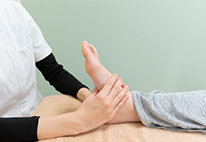
Understanding Sciatica
Sciatica involves pain along the sciatic nerve from the lower back down the leg. It typically affects only one side of the body. This condition often stems from nerve compression due to a herniated disk, bone spur, or spinal stenosis. Such compression results in inflammation and pain, sometimes accompanied by numbness in the leg.
Sciatica is more prevalent among middle-aged individuals and may arise from physical strain or poor posture. Obesity and sedentary lifestyles also contribute to the risk of developing sciatica. Preventative measures include maintaining proper posture, engaging in regular exercise, and using ergonomic setups. Early detection and proactive management are vital to reducing complications and chronic discomfort.
Timely intervention can prevent the progression to more severe pain. Managing weight and avoiding prolonged sitting can also help alleviate symptoms. These steps help maintain mobility and improve quality of life for those affected.
Book ConsultationSymptoms of Sciatica
Sciatica symptoms primarily manifest as pain that radiates from the lower back through the buttocks and down the leg, following the path of the sciatic nerve. This pain can vary in intensity and may be exacerbated by certain activities like sitting or sudden movements.

Lower Back Pain
Often the first symptom experienced, this can range from mild to severe and increases with sitting.

Burning or Tingling Down the Leg
Patients typically feel a burning sensation or tingling that moves down from the buttock to the leg.

Numbness
This may occur in the affected leg or foot, making movement awkward.

Weakness
The affected leg or foot might feel weak, impairing the ability to walk or stand.

Pain that Worsens with Movement
Pain intensifies during movements such as standing up, stretching, or walking.
Treatment Options for Sciatica
A combination of rest, physical therapy, and medication is commonly recommended to reduce inflammation and improve mobility. Early intervention can enhance the effectiveness of these treatments, helping to mitigate symptoms quickly.

Physical Therapy
Tailored exercises strengthen the muscles supporting the spine and improve flexibility, helping to relieve sciatic nerve pressure. Physical therapists may also employ techniques like ultrasound, electrical stimulation, or manual therapy to enhance recovery.

Medications
Over-the-counter pain relievers such as ibuprofen or acetaminophen can reduce inflammation and pain. For more severe cases, doctors may prescribe muscle relaxants or anti-inflammatory medications to manage symptoms more effectively. In some situations, a doctor might consider stronger pain management solutions, such as opioids, for short-term relief under strict supervision.